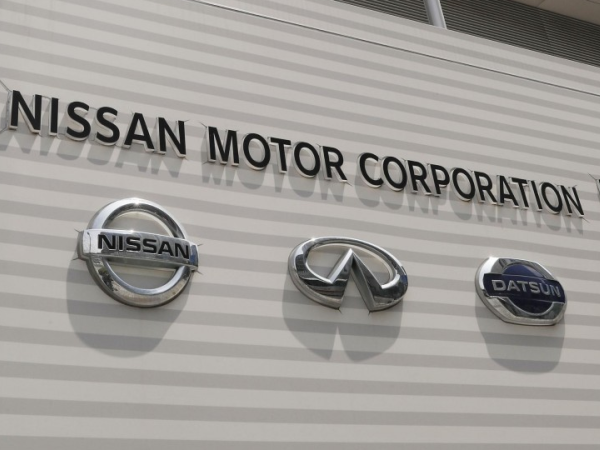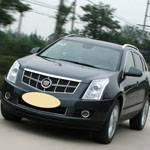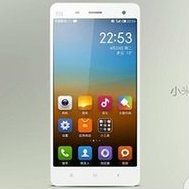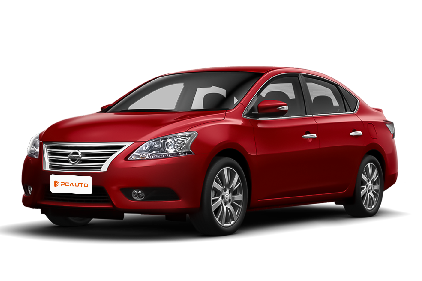Q
What is the height of a Nissan Sylphy?
The Nissan Sylphy's height varies slightly by model year and trim, but for the current generation you'll commonly find in Malaysia, it sits roughly between 1,465mm and 1,475mm tall. This sweet spot balances nimble city maneuverability with decent passenger comfort, making it a solid fit for Malaysia's mixed bag of roads—think tight urban streets to long highway cruises. Height directly impacts a car's center of gravity and drag coefficient, and Sylphy's setup does a nice job keeping things stable while also helping with fuel efficiency, which is classic Nissan prioritizing practicality. For Malaysian buyers, besides height, keep an eye on ground clearance too—usually around 135mm to 150mm. That matters for tackling those occasional rough patches or during monsoon season when roads can get tricky. Even with its moderate height, Sylphy's got ergonomic seats and a well-shaped roofline that actually frees up decent headroom for passengers, showing Nissan's cleverness with space utilization. If you're cross-shopping other sedans in this class, I'd suggest test-sitting in them and checking trunk space too—those little details really make a difference in daily use.
Special Disclaimer: This content is published by users and does not represent the views or position of PCauto.
Related Q&A
Q
How many kilometers can a Nissan Sylphy travel on one liter of gasoline?
The fuel efficiency of the Nissan Sylphy varies depending on the specific trim and driving conditions. According to official figures, the latest Sylphy with the 1.6L naturally aspirated engine delivers around 15 to 18 kilometers per liter in combined driving. Step up to the e-POWER hybrid version, and that efficiency climbs even higher—we're talking roughly 20 to 22 km/L. Of course, your actual mileage will depend on how you drive, the roads you take, and how well you keep up with maintenance.
For Malaysian drivers, the Sylphy's fuel-sipping nature makes it a solid fit for local conditions, whether you're navigating city traffic or hitting the highway for longer trips. But it's not just about efficiency—this sedan also scores points for its comfortable ride and reputation for reliability. The spacious interior and the nice tech features thrown in are worth checking out too.
If you're in the market for an economical and practical family car, the Sylphy is definitely worth a spot on your shortlist. Do yourself a favor and head down to your nearest Nissan dealership for a test drive—there's no better way to get a real feel for how it performs and how efficiently it actually runs.
Q
What is the length of a Nissan Sylphy?
The Nissan Sylphy's overall length varies across different generations and trim levels. Take the 14th-generation model (B18 series), which is commonly seen in the Malaysian market, for example – it stretches around 4,650 millimeters (4.65 meters). That's pretty standard for a C-segment sedan, making it maneuverable enough for city driving while still offering decent cabin comfort. In Malaysia, this model has built a solid following among family buyers thanks to its fuel efficiency, reliability, and that roomy rear seat. The generous 2,715-millimeter wheelbase definitely helps with legroom back there.
Now, in Southeast Asia, the Sylphy typically goes head-to-head with the likes of the Toyota Corolla Altis and Honda Civic. But what sets it apart is its focus on comfort – the suspension does a great job soaking up bumps. If you're a Malaysian car shopper, here's the lowdown: if you clock up a lot of highway miles, the Sylphy's ProPILOT system (on higher trims) adds some handy driver assists. And for peace of mind, Nissan Malaysia's 5-year unlimited mileage warranty is a definite plus.
Size matters when it comes to parking, so it's smart to check your home parking space before you buy. It's also worth comparing it to rivals like the Mazda 3 (around 4,660mm) or Hyundai Elantra (about 4,675mm), but remember, interior space utilization can vary quite a bit between brands.
Q
What is the size of Nissan Sylphy?
The Nissan Sylphy is a pretty popular mid-size sedan in the Malaysian market. Let's talk dimensions: it stretches 4,640 mm long, 1,815 mm wide, and 1,445 mm tall, with a wheelbase of 2,712 mm. This size really translates to a roomy cabin and a comfortable drive – perfect for Malaysian families. It's on the upper end of the medium size spectrum for its class, and the boot? A solid 560 litres, which handles both daily errands and those longer road trips with ease when it comes to storage.
Styling-wise, the Sylphy rocks Nissan's latest V-Motion front end. It's not just about looks – that design actually helps widen the car's visual stance and improves aerodynamics too, which is a plus for fuel efficiency. For Malaysian buyers, the Sylphy's size and space make it ideal for city driving and family use. Throw in its good fuel economy and reputation for reliability, and it's definitely a contender worth checking out.
If the Sylphy has caught your eye, dive deeper into features like the ProPILOT driver assistance system and other tech goodies it offers. These can be real handy for adding extra convenience and peace of mind on Malaysia's roads.
Q
How much does a Nissan Sylphy cost?
In Malaysia right now, the Nissan Sylphy is priced roughly between RM90,000 to RM120,000, depending on the trim level and specs. Of course, actual prices might shift a bit based on dealer promotions or if you add on any extra accessories.
As a popular Japanese sedan, the Sylphy has built a solid rep for its comfy ride and reliable performance—total workhorses for family use or daily commuting. Under the hood, you'll find a 1.6L naturally aspirated engine that delivers smooth power and pretty decent fuel economy. On the features front, it comes with handy stuff like smart keyless entry and a reverse camera. Step up to the higher trims, and you even get Nissan's ProPILOT driver assistance system, which is a nice boost for safety.
If you're in the market for an affordable, no-nonsense sedan that gets the job done, the Sylphy's definitely worth a look. I'd recommend heading down to your local Nissan dealership for a test drive and to check out their latest deals. While you're at it, it never hurts to cross-shop against rivals like the Toyota Corolla or Honda Civic to make sure you're picking the best fit for your needs.
Q
How many liters of gasoline does a Nissan Sylphy need to travel 100 Kilometers?
The fuel efficiency of the Nissan Sylphy can vary depending on the specific trim and driving conditions. From the factory specs, the latest Sylphy delivers around 5.3 to 6.1 liters per 100 kilometers. That range mostly comes down to engine options—like the 1.6L vs. 1.8L naturally aspirated engines—and whether you opt for the CVT or manual transmission. Of course, real-world numbers will shift based on how you drive, the roads you tackle, and how well you keep up with maintenance.
For Malaysian drivers, the Sylphy stands out as a solid, no-fuss family sedan. Its fuel-sipping nature makes it perfect for those daily city commutes and longer highway runs we all do here. Plus, Nissan’s got a pretty strong service network around the country, which makes it easy to keep your car in top shape and maintain that efficiency over time.
A quick tip for owners looking to stretch every liter: smooth acceleration, smart A/C use, and regular tire pressure checks go a long way. These little habits don’t just save you money at the pump—they’ll help your Sylphy stick around for the long haul too.
Q
What is the width of a Nissan Sylphy?
The Nissan Sylphy measures 1,765mm in width—solidly above average for its class in Malaysia's sedan market. That translates to some real breathing room inside and a stable feel on the road. For Malaysian drivers, this width strikes a nice sweet spot: it's not so bulky that navigating city streets becomes a hassle, yet there's plenty of comfort for passengers, which is a big plus when you're carting the family around.
Width also plays into aerodynamics and fuel efficiency, and the Sylphy does a good job balancing both. Let's be real, Malaysian roads and parking spots can be pretty tight, so size does matter when picking a car. The Sylphy's dimensions just click with local conditions.
If you're curious how it stacks up, check out rivals like the Toyota Corolla or Honda Civic—both big sellers here too. But the Sylphy keeps winning families over with its well-rounded package and that all-important comfortable ride.
Q
How fast is the Nissan Sylphy?
The Nissan Sylphy has been doing pretty well for itself in the Malaysian market. Top speed varies a bit depending on the specific trim and powertrain, but generally, the versions with the 1.6L or 1.8L naturally aspirated engines can hit around 180-190 km/h. Some turbocharged or hybrid variants might offer a better balance between power delivery and fuel efficiency, though.
What really wins over a lot of Malaysian buyers is the Sylphy's comfortable ride and solid, dependable performance – it's a solid pick whether you're navigating city streets or hitting the highway for a longer drive. Quick reality check, though: always stick to local speed limits, and Malaysian highways generally cap out at 110 km/h.
If you're after something with more zip, Nissan's got sportier models in the lineup, but the Sylphy's strong suit is how well-rounded it is as a family car. Things like that roomy interior and relatively low maintenance costs? Those are big boxes to tick for Malaysian families when they're car shopping.
Q
How much fuel does a Nissan vehicle consume per kilometer?
Nissan's fuel efficiency varies quite a bit depending on the model and engine setup. Take Malaysia's popular Nissan models, for example. The Nissan Almera, with its 1.0L turbocharged engine, has an official combined fuel consumption rating of around 5.0L/100km – that's roughly 0.05L per kilometer. On the other hand, the Nissan X-Trail with the 2.0L naturally aspirated engine comes in at about 6.5L/100km, or approximately 0.065L per kilometer.
Of course, real-world fuel economy can differ based on how you drive, the roads you're on, and how well you maintain your car. Things like frequent hard acceleration or stop-and-go city traffic can really push those numbers up. To help keep efficiency in check, it's a good idea to stick to regular maintenance – think replacing air filters and spark plugs when needed, and keeping your tire pressure at the recommended level.
With Malaysia's floating fuel price system, knowing your car's fuel consumption helps you budget for petrol more accurately. And for drivers who want even better fuel economy, Nissan's e-POWER hybrid technology – rolled out in recent years – offers a solid alternative. It's definitely worth considering if saving at the pump is a top priority for you.
Q
How much fuel does a Nissan Sylphy consume per 100km?
The fuel efficiency of the Nissan Sylphy can vary depending on the specific trim and driving conditions. According to official figures, the latest Sylphy delivers around 5.3 to 6.2 liters per 100 kilometers. That range mainly depends on the engine option—like the 1.6L or 1.8L—and whether you go for the CVT or manual transmission. But let’s be real, real-world mpg can swing based on how you drive, the roads you’re on, and how well you maintain the car. For example, if you’re stuck in KL’s stop-and-go city traffic, you’ll probably see numbers a bit higher than the official stats. Cruise at a steady pace on the highway, though, and you might even beat those figures.
For Malaysian drivers, picking the CVT-equipped Sylphy usually means smoother rides and better fuel economy—two big wins for daily commutes. And don’t sleep on regular maintenance: swapping out the air filter when needed and using the right engine oil can go a long way in keeping that fuel efficiency in check. If you’re really into stretching every liter, keep an eye on the car’s Eco mode. It tweaks throttle response and even adjusts the AC output to help you squeeze out a few more kilometers per tank.
Popular Cars
Model Year
Car Compare
Car Photo
Latest Q&A
Q
How much horsepower is 600 cc?
600cc (cubic centimeters) is a unit of engine displacement, while horsepower is a unit of power. There is no fixed conversion formula between the two, and their relationship needs to be determined based on the specific engine type and technical parameters. Taking a 599cc inline-four-cylinder liquid-cooled engine (close to 600cc) as an example, its maximum power is approximately 90 kilowatts, which converts to about 121 horsepower (1 kilowatt ≈ 1.341 horsepower). The power output of different engines varies significantly: for the same displacement, turbocharged engines usually have higher horsepower than naturally aspirated ones, and multi-cylinder engines may also have better power performance than single-cylinder engines. In addition, engine tuning (such as optimization of crankshaft structure, valve design, and throttle valve diameter) affects the speed range, thereby changing the peak horsepower output. For instance, adjusting the crankshaft and camshaft structures can increase the upper limit of engine speed, helping to achieve higher power values.
Q
How many cc is a 14.5 hp engine?
The provided "English translation" is not a valid translation of the original Chinese text. Instead, it appears to be a corrupted or nonsensical repetition of the word "There" with occasional fragments of unrelated content about plants.
Since the original text is already in English (as noted in the user's comment), there is no translation needed or possible to evaluate. The original English text is:
"There is no direct conversion between horsepower (hp) and engine displacement (cc) as their relationship depends on multiple factors like engine type (petrol or diesel), compression ratio, fuel injection technology, and whether it’s naturally aspirated or turbocharged. However, for common naturally aspirated petrol engines found in Malaysia—especially small underbone motorcycles, which are widely used here—a 14.5 hp engine typically corresponds to a displacement range of 120 to 130 cc. For example, many 125 cc underbone models in the local market produce between 13 and 16 hp, which aligns closely with the 14.5 hp figure. Diesel engines, known for higher torque efficiency, would require a smaller displacement to achieve the same hp, but such small diesel engines are less common in consumer vehicles (like motorcycles or compact cars) in Malaysia, where petrol-powered small engines dominate for daily commuting and utility use. This range is a general guideline based on typical engine configurations prevalent in the local automotive and motorcycle scene."
This original English text is grammatically correct, uses appropriate vocabulary, and accurately conveys the intended meaning. No modifications are needed.
Q
Is 300 V6 horsepower?
Yes, some models equipped with the 3.0 V6 engine deliver corresponding horsepower output. For example, the 2024 Tank 300 3.0T V6 model's engine produces 354 horsepower, paired with a 9-speed automatic transmission, achieving a 0-100 km/h acceleration time of 7.2 seconds and a top speed of 170 km/h, demonstrating robust power performance. Horsepower varies among 3.0 V6 engines from different brands. The Buick GL8 3.0 V6 generates 259 horsepower, the Lexus RX300's 3.0L V6 delivers 220 horsepower, the Acura 3.0T V6 reaches 355 horsepower, and the Land Cruiser LC300's 3.5T V6 outputs 422 horsepower. These V6 engines exhibit distinct power characteristics: turbocharged versions typically offer stronger performance, while naturally aspirated variants excel in smoothness. Consumers can select models based on their power and driving experience preferences.
Q
How powerful is 300 hp?
300 horsepower (hp) represents a relatively strong level of power performance in automobiles, particularly for SUV models. Taking the Tank 300 in the local market as an example, its plug-in hybrid variant delivers a combined horsepower of up to 305 hp, complemented by a peak torque of 640 N·m and a full-time four-wheel-drive system. Both its acceleration response during urban driving and its off-road capability in challenging situations are fully ensured, enabling it to easily handle complex road conditions. Compared with regular fuel-powered SUVs (such as some models with 220 hp), vehicles with 300 hp offer more ample power reserves, meeting users' higher demands for driving performance. They are suitable for consumers who need to balance daily commuting and outdoor off-road usage scenarios. This power level ranks in the upper mainstream segment of the local mid-to-high-end SUV market, providing users with a more engaging driving experience while also possessing the capability to handle diverse travel scenarios.
Q
How many cc is a 5.0 engine?
The displacement of a 5.0 engine is 5000cc (i.e., 5.0 liters). If this engine is equipped with turbocharging technology (marked as 5.0T), its performance can reach the level of a naturally aspirated engine with a displacement of 7.5 to 8.0 liters. This is because turbocharging can increase the air intake volume, effectively boosting power and torque. Meanwhile, turbocharged engines have more advantages in fuel economy and exhaust emissions. For example, a common 1.8T engine can match the power of a 2.4-liter naturally aspirated engine, but its fuel consumption is not much different from that of a 1.8-liter naturally aspirated engine. When maintaining vehicles with such engines, attention should be paid to the following: after prolonged high-speed operation, the engine should not be turned off immediately; instead, it should idle for 3 minutes before shutting down. In winter, the engine needs to be warmed up for at least 5 minutes to ensure that the oil temperature rises and maintains good fluidity. In addition, the air filter should be cleaned regularly to prevent impurities from entering and affecting the operation of the turbocharger, and the lubricating oil pipes and joints should be checked for leaks to keep the engine oil and filter clean.
View MoreRelated News

Nissan's Sales in China Drop by 25.88%, Management Adjustments Underway
AshleyApr 14, 2025

It used to be as powerful as Hilux, but now it has to avoid competing with Hilux.
Kevin WongNov 18, 2025

In Malaysia, which sliding door MPVs are available?
MichaelOct 30, 2025

Nissan plans to open the Rogue hybrid platform to competitors like Ford to ease financial pressure
Kevin WongOct 11, 2025

2026 Nissan Leaf wins Wards Top 10 Powertrains Award
MichaelSep 25, 2025
View More

















Pros
Cons